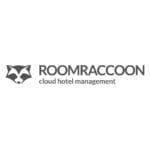 Yesterday, Part 1 of this two-part look at how hotels can upgrade their front-of-house operations to reflect enlightened stances on sustainability focused on food outlets. Now, let’s take a closer look at the marketing of other points of interaction with customers to get better ROI from eco-friendly initiatives.
Yesterday, Part 1 of this two-part look at how hotels can upgrade their front-of-house operations to reflect enlightened stances on sustainability focused on food outlets. Now, let’s take a closer look at the marketing of other points of interaction with customers to get better ROI from eco-friendly initiatives.
In the lobby and the building in general
While LEED certification is now all-but-required for any new hotel build, incremental upgrades are equally newsworthy because when it comes to helping the environment every bit counts. For starters, any existing badge that you already possess in this regard should be prominently exhibited both online and onsite. For the former, the website is the obvious starting point but this is also great content for any third party as well as social media. As for the latter, display signage at front desk along with a more detailed handout to elaborate upon the full extent of your environmental policy.
But as stated in Part 1, most of what constitutes a thumbs up from a green building agency like LEED will stem from back-of-house operations. Hence, in order to drive the message home and spark a loyal following, your interior design must likewise exude a sense of place reflective of this newfound brand identity. Procuring lobby art that is made from recyclable materials is less about conservation and more about making a statement that you support sustainability as well as the greater community.
Thinking again of the back-of-house, when you refurbish, one of the foremost criteria for choosing your designer must be how he or she intends to enact gradual change while also incorporating recycled materials. Then there are the usual suspects of converting to LEDs, better boilers and more efficient waterflow machinery for bathrooms as well as the grounds. Also check in to see what government grants can be taken advantage of.
Around the property, there’s potential for drip irrigation, incorporating local species of plants into the landscaping or the building of a garden for heirloom crops. While this garden won’t be enough to meet the demands of your entire foodservice requirements, it is a token effort that, when properly planned, can be put front and center where guests can see. Another odd bedfellow of the garden is the apiary. A few bold hotels are tucking these away on their roofs or just beyond reach then branding their own hyperlocal honeys.
One final benefit you may have overlooked. While sustainability efforts are designed to save money on the back-end and heighten guest appeal in the front, you must also consider another key stakeholder – your employees. People want to work for places that care. Your associates are the ones who live and breathe your hallways and spaces, so any material upgrades you enact will help to motivate your team. This can be further bolstered by explaining your mission and getting buy-in so everyone knows the importance of what you are trying to accomplish.
In the guestroom
Most of these you should already be well aware of if you have attended any hospitality technology tradeshow in the past three years. Still, though, they are worth repeating and substantiating.
While there are a myriad of in-room sustainability upgrades you can make, none are more explicitly guest-facing than the smart thermostat. These can be finely attuned to conserve energy by not heating or cooling rooms when no one is present. As well, with the rise of IoT guestrooms, these can be linked to the PMS so you can have just-in-time temperature settings for when a guest arrives or leaves.
Next best is a towel recycling program as well as something as simple as separate garbage bins for waste and recycling because these are both highly visible. Along these lines, you might consider detergent dispensers instead of mini-bottles to reduce the amount of plastic consumption. These three all come with the corollary that you must retrain your housekeepers accordingly and account for any additional time needed to clean the rooms.
Thinking aesthetically, there are many other subtle enhancements that might also apply to other operations like meetings and not your rooms and suites. These include using mugs for the coffeemaker instead of paper cups, providing electronics for writing to get away from notepads, wiring in a master switch that turns off all the lights in a room after you remove your key or, if necessary, thick window films to reduce heat transfer.
Throughout cyberspace
Always the showman, all these efforts would be for naught if you don’t amplify them across multiple channels. As previously cited, most important is your website where, after you’ve gotten the ball rolling on a few of these initiatives, a dedicated page or subsection on corporate social responsibility should be drafted with the proper environmental keywords strategically repeated throughout.
Thinking holistically, make sustainability part of your mission statement then link to it through the appropriate channels and websites that already scrape information from yours to furbish their landing pages. You might also recruit environmentally inclined journalists and travel bloggers to report in on what you are doing as part of a public relations campaign. The key term to keep in mind here is ‘conspicuous conservation’. You can’t just make the change; you have to tell everyone so they too can get in on the action!



















